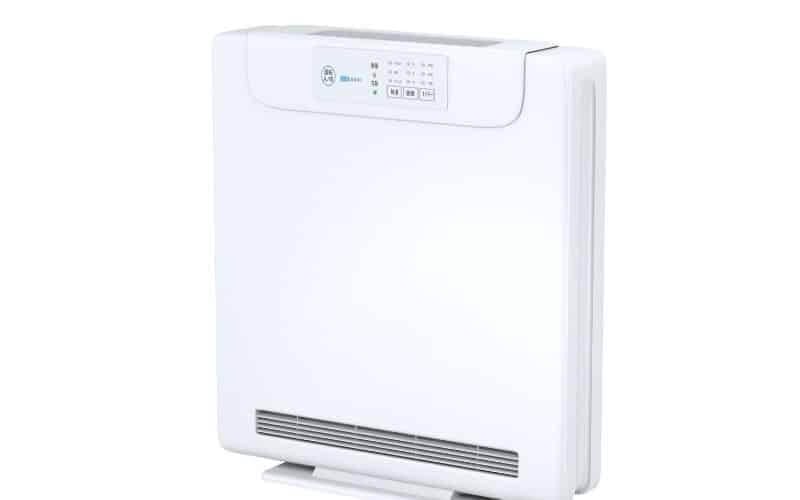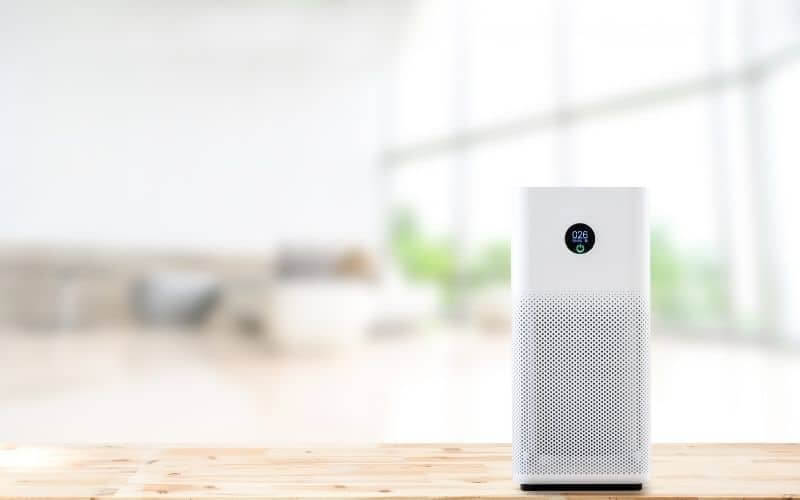Air is an essential part of our lives, and it can have a big impact on our comfort and well-being. If the air in your home or workplace is polluted or stale, it can make you feel sick and irritable, reduce your energy levels, and even cause long-term health problems. Fortunately, there are a variety of effective air cleaning products that you can use to improve the quality of the air in your environment.
Comfort Time offers a range of high-quality air filtering systems and purifiers that effectively trap harmful particles like dust, pollen, smoke, bacteria, and viruses.
Whether you need to combat indoor allergens or just get rid of unpleasant smells from cooking or pets, Comfort Time has the perfect solution. So why wait? Invest in top-quality air cleaning products today and start breathing easier!
Here are some air cleaning devices that are recommended by experts.
What are the Different Types of Air Cleaning Technologies?
Even if you’ve taken steps to eliminate pollutant sources in and around your house, provided ventilation, and changed your central air filters, you might still have an issue with excessive smoke, dust, or odors. If this is the case, an air cleaner may be beneficial.
As explained below, most air cleaners remove particles, a few remove gases (and odors), and a few do both. The information below will assist you in determining the type and size of air cleaner you require, as well as how to correctly use it.

Removal of Particles
Mechanical or physical-barrier air cleaners and electronic air cleaners are the two fundamental types of air cleaners that remove particles such as dust and allergies from the air.
1) Air purifiers that are mechanical
These devices draw air through a fiber or metal filter that traps particles of various sizes. At the very least, medium efficiency filters should be used in these devices. Mechanical devices with a high efficiency or HEPA filter are recommended since they remove more of the tiny particles of concern and do not produce ozone. Although some devices feature filters that may be cleaned and reused, the filter must fit tightly in its seat and be replaced on a regular basis. Flat, round, or pleated filters are available.
2) Electronic Air Purifiers
Intentional ozone generators, electrostatic precipitators (ESPs), and ionizers are the three types of electrical air cleaning technology available for portable and central air cleaners:
Ozone generators are designed to produce large volumes of ozone, which can lead to poor indoor air quality and a pungent stench; they are not advised for use in homes, schools, or other populated spaces.
ESPs, ionizers, and hybrid electronic technologies normally produce very low levels of ozone, but some do produce enough to cause harmful exposures; these should be handled with caution. These devices must be cleaned and maintained on a regular basis, and only used according to the manufacturer’s recommendations to reduce ozone emissions.
Check CARB’s list of certified air cleaners before purchasing any portable air cleaner. CARB-certified air cleaners have been tested and found to have an ozone emission limit of 0.050 parts per million (ppm). (A single drop of water in 15 gallons of water equals one ppm.) They also meet Underwriters Laboratories, Inc.’s applicable electrical safety standards (UL).
Removal of gas and chemical vapors
Purchase and maintenance of residential air cleaning devices that successfully remove gases and odors are both relatively expensive. As air is drawn through materials like activated charcoal (carbon) or alumina coated with potassium permanganate, gaseous contaminants are often trapped or eliminated.
The filter material, on the other hand, might soon get overloaded and need to be replaced. Some residential particle air cleaners include these filters (typically charcoal) as an option. This is an option to explore if you have particularly sensitive people in your home or odors that are difficult to eradicate, especially in a single area.
To remove particles, gases, and chemical vapors, both portable and central air cleaners continue to incorporate newer types of technology that can be paired with the electronic or mechanical technologies outlined above:
- UV radiation and a photocatalyst, such as titanium dioxide, are used in photocatalytic oxidation (PCO) air cleaners to produce hydroxyl (OH) radicals, which are reportedly generated to eliminate gaseous pollutants.
- UV germicidal irradiation (UVGI) air cleaners employ UV light to eliminate biological pollutants in the air.
- High-temperature heating devices in air cleaners (found in a few portable air cleaners) claim to kill biological contaminants and eliminate gaseous pollutants.
- Biological pollutants are claimed to be destroyed by “air washers” or air cleaners that electrolyze water to produce OH radicals and hypochlorous acid.
- Nanofibers are used in the medium of several filters.
How Do I Choose Between Portable and In-Duct (Central) Air Cleaners?

Air cleaners come in a variety of sizes and configurations, including portable units for single rooms and bigger central air cleaners for entire homes. Smaller portable units cost between $50 and $200, whereas larger or more efficient portable units cost more than $300. Depending on the size and performance of the device, central air cleaners can cost anywhere from $250 to $3,000.
Air Purifiers on Wheels
Portable air cleaners are useful in existing homes when installing a central air cleaner would be too expensive or impossible, and where air cleaning is only required in one room or area. Portable air cleaners must have the right size, position, and maintained to be effective:
- Check the air cleaner’s room size rating (in square feet of floor area) and select the appropriate unit for your needs. More information is available in the section below titled “What Size Air Cleaner Should I Use?” In addition, the Appendix at the end of this fact sheet has specific instructions for establishing size requirements.
- Check out CARB’s list of approved air purifiers.
- Examine the device’s box for a CARB-certified label: CARB Certified Air Cleaner Label
- Install the unit(s) in the room(s) where your family spends the most time or where the most air cleaning is required.
- Place the air cleaner away from doors, windows, and foot traffic, but not near walls or corners, so that air can readily reach it and effectively clean the entire space.
Central Air Cleaners (In-Duct)
To reduce airborne particle and chemical vapor pollution, central air cleaners using the technologies listed above, such as ESPs, HEPA, PCO, and UVGI, can be added to traditional forced air systems in new or existing homes.
However, certain air cleaners that use HEPA or high efficiency filters may require a more powerful fan to flow enough air through them. Furthermore, energy expenses for ongoing fan operation might be high for continuously working air purifiers. Alternatively, some manufacturers make forced air systems with a two-speed or variable-speed fan, which allows the system to run at a reduced fan speed when less air cleaning or fresh air ventilation is required.
“Whole-house” or “fresh-air” ventilation systems, which may or may not include filtration, can be installed separately from the central heating and cooling systems in new homes or large remodels. Small diameter ducts, a silent energy-efficient fan, and an optional heat- or energy-recovery ventilator are common features of these systems (HRV or ERV).
HRVs and ERVs save money on ventilation system electricity expenses by utilizing exhaust air energy to heat or cool incoming fresh air. HRVs and ERVs save energy in climatic zones with more extreme temperatures, however they may not save energy in moderate climate zones. Depending on the system size and kind of air cleaning device used, installation prices range from $700 to $2,000 or more.
Fresh-air ventilation systems with filtration are recommended; systems with sufficient filtration to eliminate incoming outdoor pollution should be installed. Contact a business or contractor with experience designing and installing central filtration systems for any central system air cleaner. Request a system with low leakage, is simple and inexpensive to maintain, is energy efficient, and does not emit ozone.
Which Air Cleaner Size Should I Use?
Trade and engineering groups have produced test standards for particle removal by air cleaning equipment, but no standards for gas removal have been developed.
Most portable air cleaners are graded on their ability to remove particles in terms of pollutant removal efficiency, or Clean Air Delivery Rate (CADR), which is measured in cubic feet per minute (CFM). The CADR is calculated by multiplying the airflow (CFM) by the particle removal efficiency; the higher the CADR, the better.
Dust, pollen, and ambient tobacco smoke clearance all have their own CADR ratings. Larger air cleaners generate more noise and consume more energy than smaller models. As a result, you should avoid purchasing an air cleaner that is too large for the space you are cleaning.
As we spend more time indoors, it’s important to create a comfortable and healthy environment. Air cleaning products can play a big role in improving indoor air quality. By removing allergens, pollutants and other contaminants from the air, they can help you and your family breathe easier.
With so many different types of air cleaners on the market, it can be tough to know which one is right for you. But Comfort Time is here to help. We offer a wide range of air cleaning products that are designed to suit any need. So whether you’re looking for an air purifier for your bedroom or an ozone generator for your office, we have you covered. Contact us today to learn more about our air cleaning solutions.





